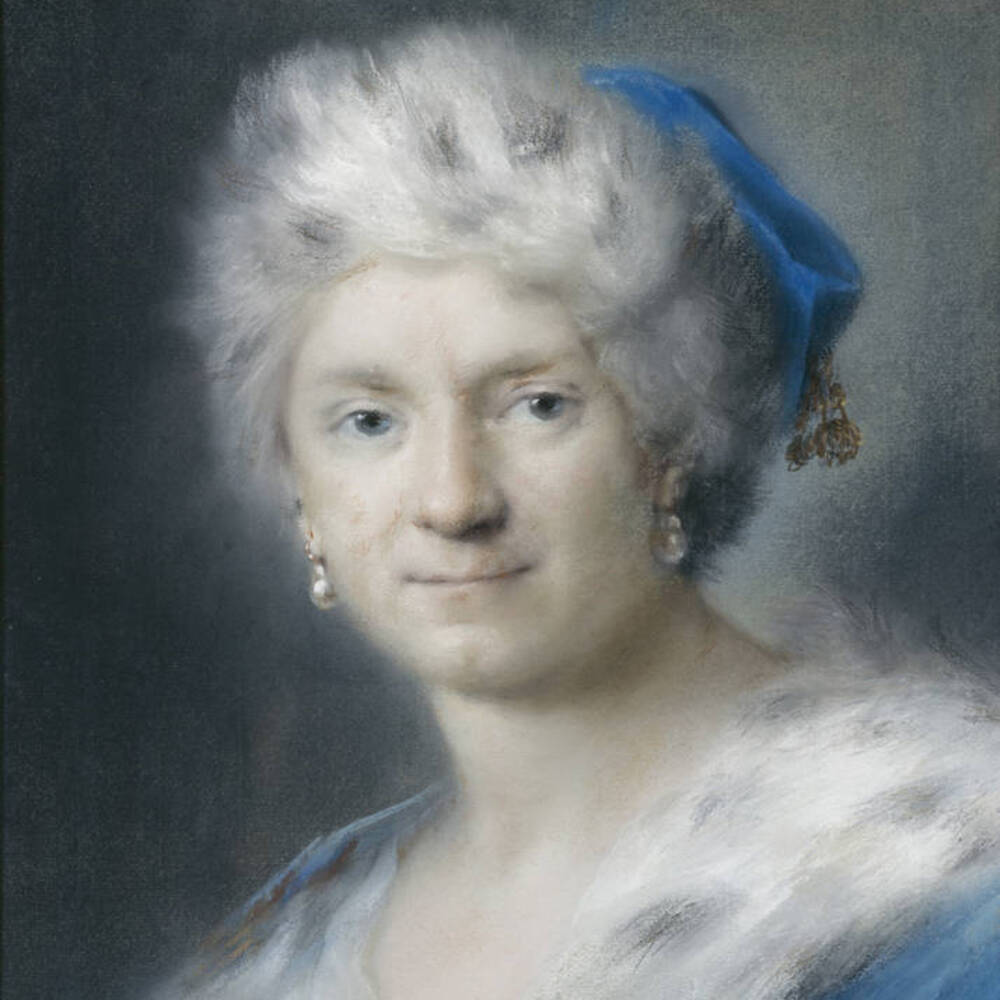Rosalba Carriera is an exceptional phenomenon. No female painter before her had ever won such renown; nearly all of Europe desired to have her paint their portrait. Yet she resisted all invitations to become a court artist. Everybody had to come to her in Venice; she ventured elsewhere only three times – to Paris (1720/21), Modena (1723) and Vienna (1730). In this self-portrait, she does not idealise her image, but contemplates her age. As an allegory of winter, it addresses the last phase of life.
Further Media



The amazing realism of Rosalba Carriera’s self-portrait from 1731 is due, not least, to her virtuoso skills in pastels. Those skills are prominent here not just in the soft, blurred transitions, but also the almost tangible qualities of her complexion, seemingly freshly powdered, the velvet’s powerful sheen, and the dense structure of the fur.
Pastels are executed on coarse paper, parchment or canvas. The chalky pastel powders can be pressed into a stick or crayon to use as a drawing material, but the result can also be smudged afterwards to give it a painterly appearance. Thanks to the soft transitions and constant impression of slight blurring, pastels seem more realistic than any other painterly graphic form of art. Moreover, pastels offer a wide spectrum of colours. In particular, Rosalba Carriera’s hometown of Venice looked back on a long tradition of bright colours in art, and so the new pastel crayons in the eighteenth century were also applied in many different colour tones. In contrast to oils, since pastel pigments are not surrounded by a binding agent, they appear to have a more luminous and direct quality.
The earliest known pastel paintings were by sixteenth-century northern Italian artists. Initially, though, only three pigments were used for pastels – black, white and red. The Italian artists primarily worked with coloured powder pigments for preliminary sketches for their oil paintings.
Pastel painting enjoyed its Golden Age in the eighteenth century. Rosalba Carriera, who specialised in society portraits, pioneered the exclusive use of pastels. For portraits, the technique of pastel painting had some very definite advantages over working in oils. The pastel crayons were not just far lighter to transport, but also cheaper – and since pastels do not have to dry, artists needed fewer sessions with their subjects.
With her pastel portraits, Rosalba Carriera triggered a wave of enthusiasm for this art technique across Europe. Many artists also on show in the gallery, such as Anton Raphael Mengs and Jean-Etienne Liotard, were inspired by Rosalba’s pastels – and so helped to make pastel an independent medium in art.
After the French Revolution, pastel painting initially declined in popularity as it was associated with the aristocracy and nobles of the Ancien Régime. But pastels enjoyed a new lease of life towards the end of the nineteenth century – above all, in works by the French artist Edgar Dégas and the Impressionists.
- Location & Dating
- 1730/31
- Material & Technique
- Pastel on paper
- Dimenions
- 46,5 x 34 cm
- Museum
- Gemäldegalerie Alte Meister
- Inventory number
- Gal.-Nr. P 29